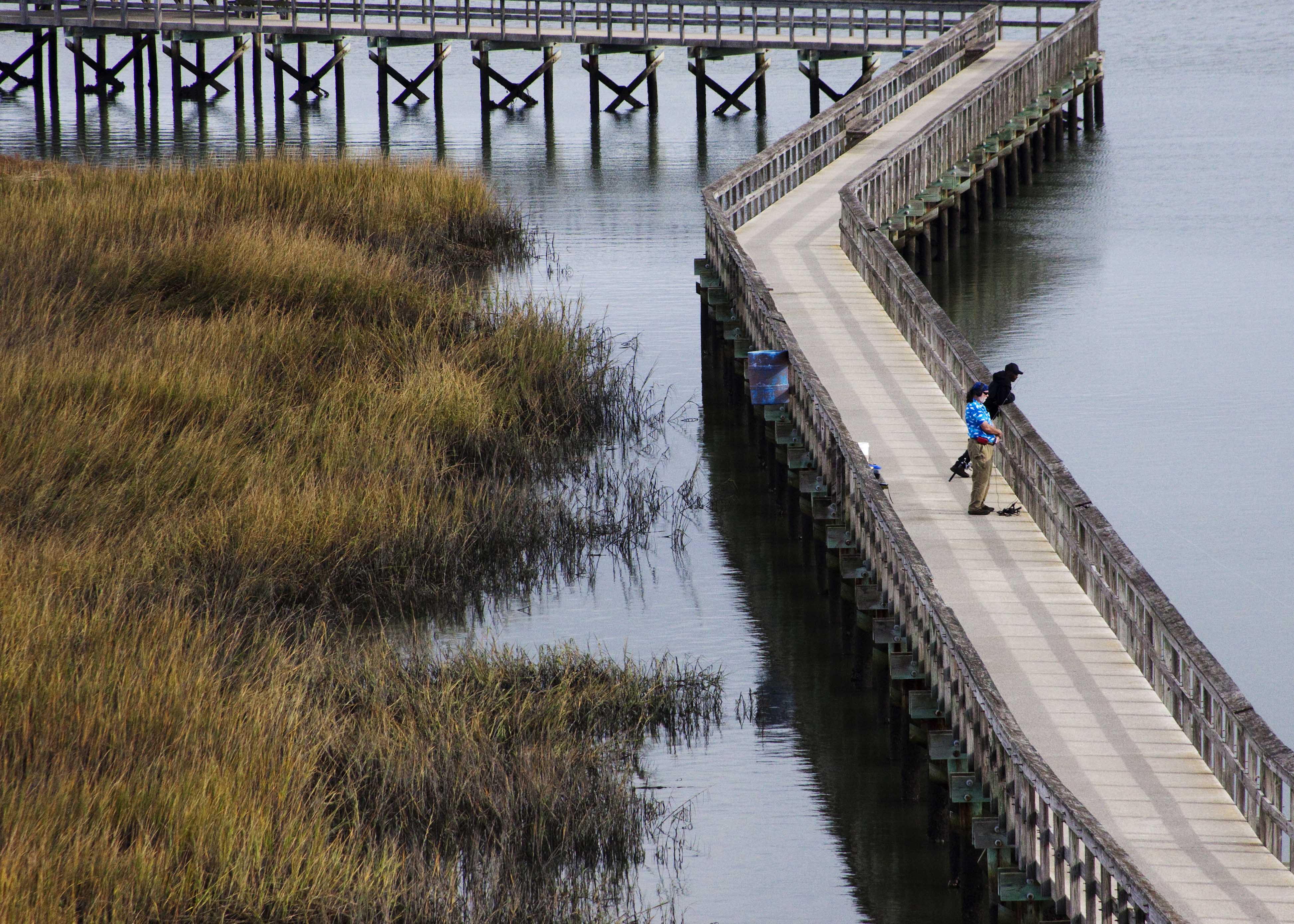
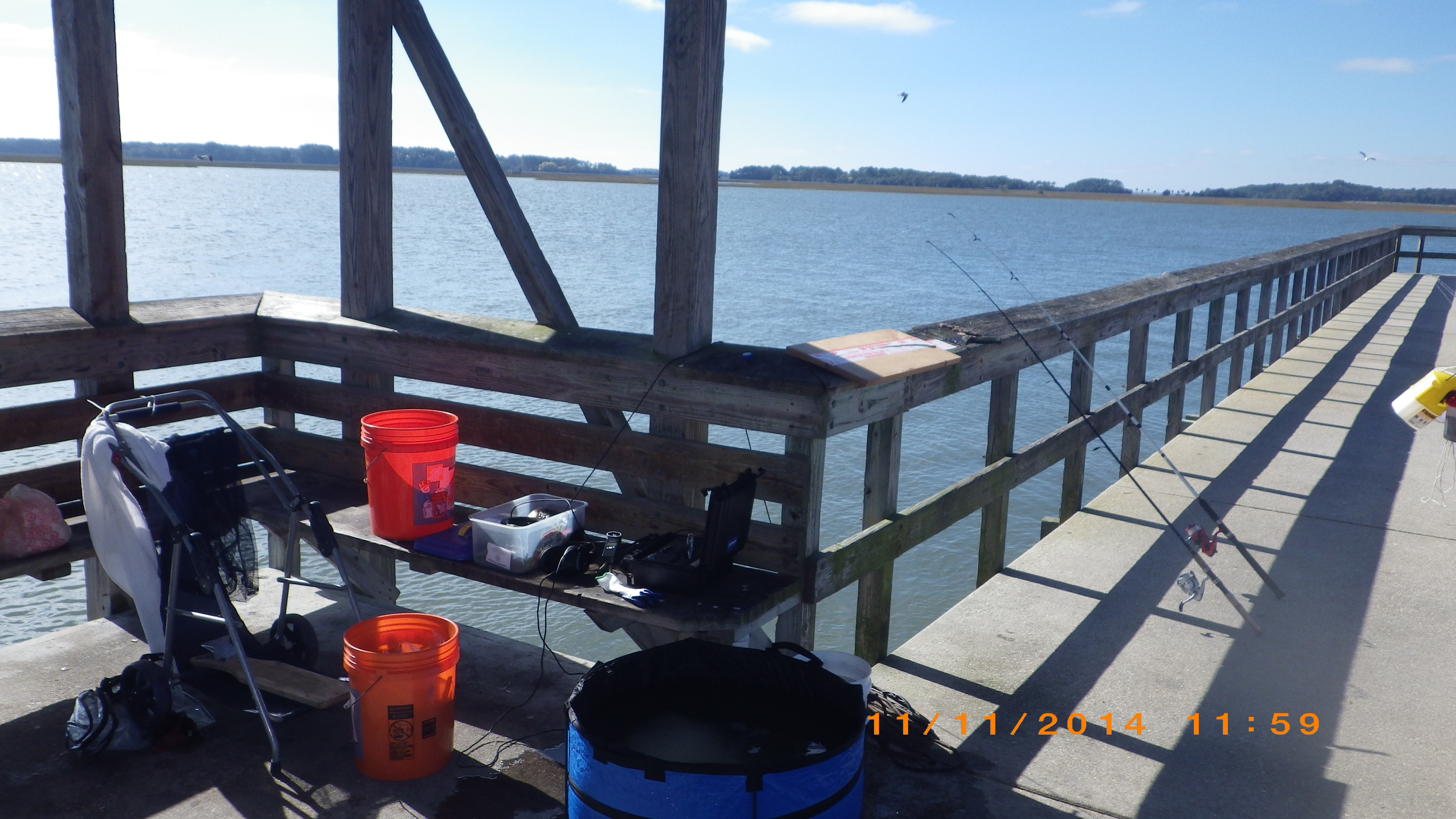
Navigate toolbar: [ Fish Diets | My Photos | Estuarine Research | FADs | Soniferous Fish | My CV | My Youtube | Children's Stories | Fish Facts | My Writings | Home Page ]
Carolina Fish Sounds
Over the years I have auditioned many fish for sound production while vacationing in North and South Carolina. Here are a few examples of fishes I've auditioned and those that I have recorded sounds from. I often record in the area of Morehead City and Beaufort North Carolina while visiting family. One of my favorite places is the public fishing pier on the Beaufort/Morehead City causeway. It is located near the mouth of the Newport River next to the high-rise bridge (N34 43.308 W76 41.265).
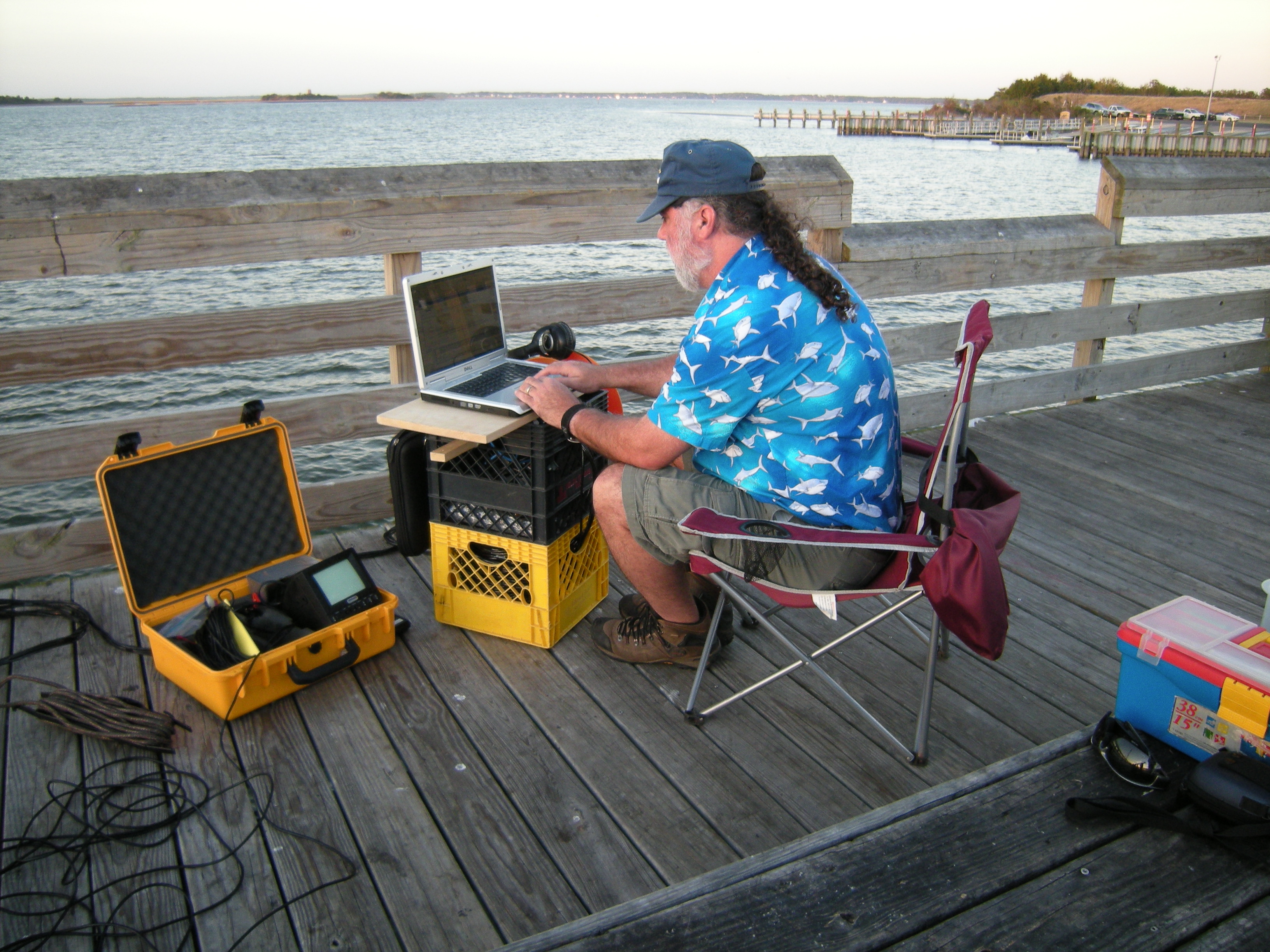
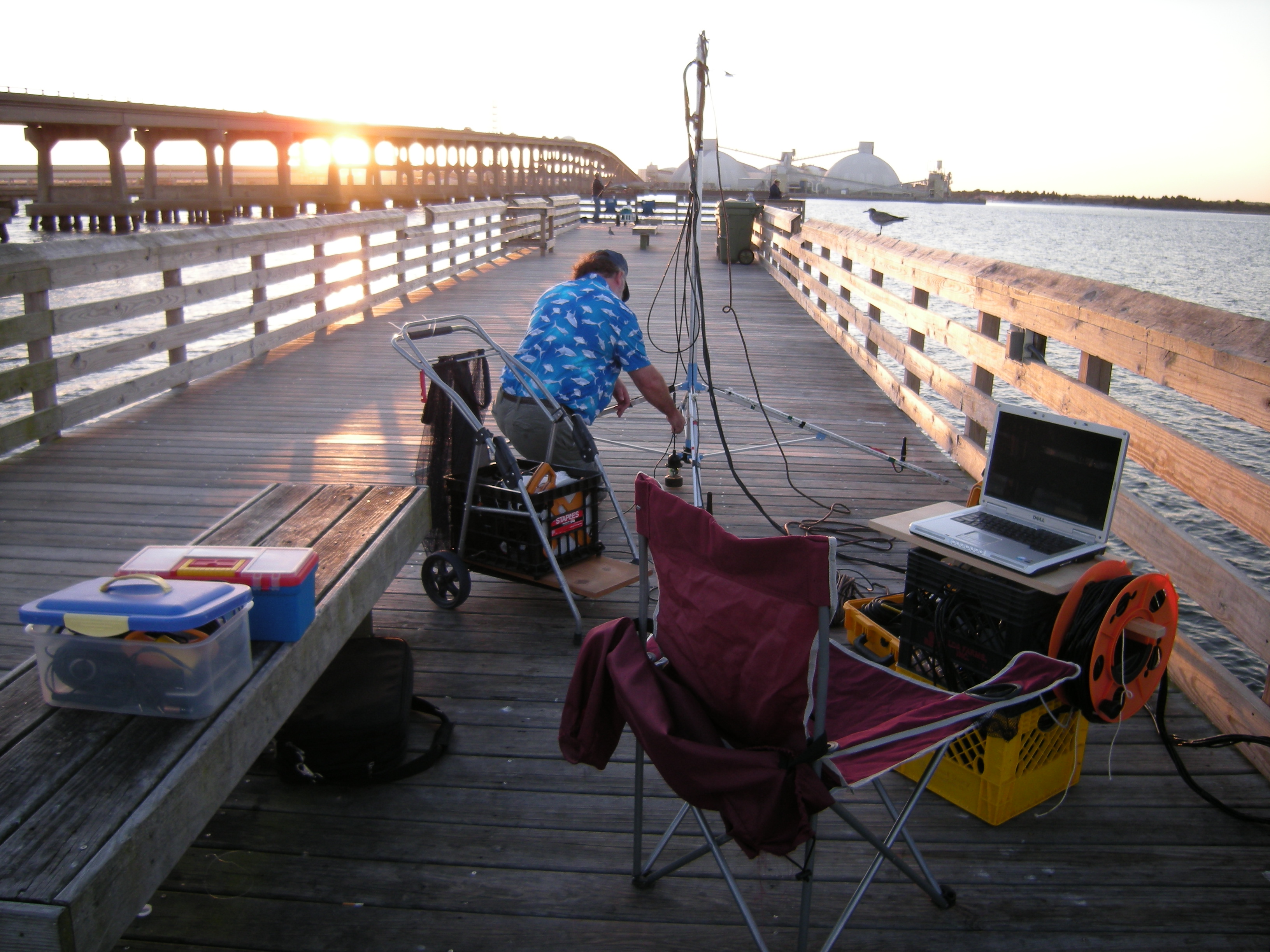
I have also occasionally recorded in South Carolina while visiting friends in the Port Royal area. One site was the Port Royal Boardwalk


Another site was on a small marsh creek "Harbor River" on Harbor Island, SC
When I'm recording in the field, I often try to do both "soundscape" recording and auditioning of individual fish. Soundscape recording is where I drop a hydrophone, and sometimes a camera, into the water and record all the sounds from the natural environment, which includes both biological sounds and noises made by man's activities such as boating and fishing. Unfortunately, we still know so little about fish sounds that many of the sounds I record are unknown. So, one way to address that is to audition fish at the same time and place where I am recording the soundscape. To audition fish, I hold individuals underwater in a bucket or small pool in which I have placed a hydrophone. In recent years I record simultaneously from the hydrophone and a microphone to record both the underwater sounds and any voice notes or air-borne sounds. Voice notes are helpful for long-term archiving of the data and in case written notes are lost. I've learned the hard way not to rely solely on the voice notes as sometimes the microphone fails for various reasons (or there is too much noise to hear them clearly). I can see my old professors rolling their eyes the few times I've relied solely on voice notes. Didn't they teach me better in school! Sure enough, the recording failed! And you know that when a recording fails, it was of something important! Well in my defense I'm usually working by myself and itís hard to take notes when you are trying to audition a wet, wiggling, fish, take pictures, get measurements, and record the sounds at the same time without getting your notes or equipment wet. Try doing that when its windy too! To learn more about methods of auditioning fish in the field, see my brief pictorial guide at: Passive acoustic methods: auditioning fish for sound production and soundscape recording in the field
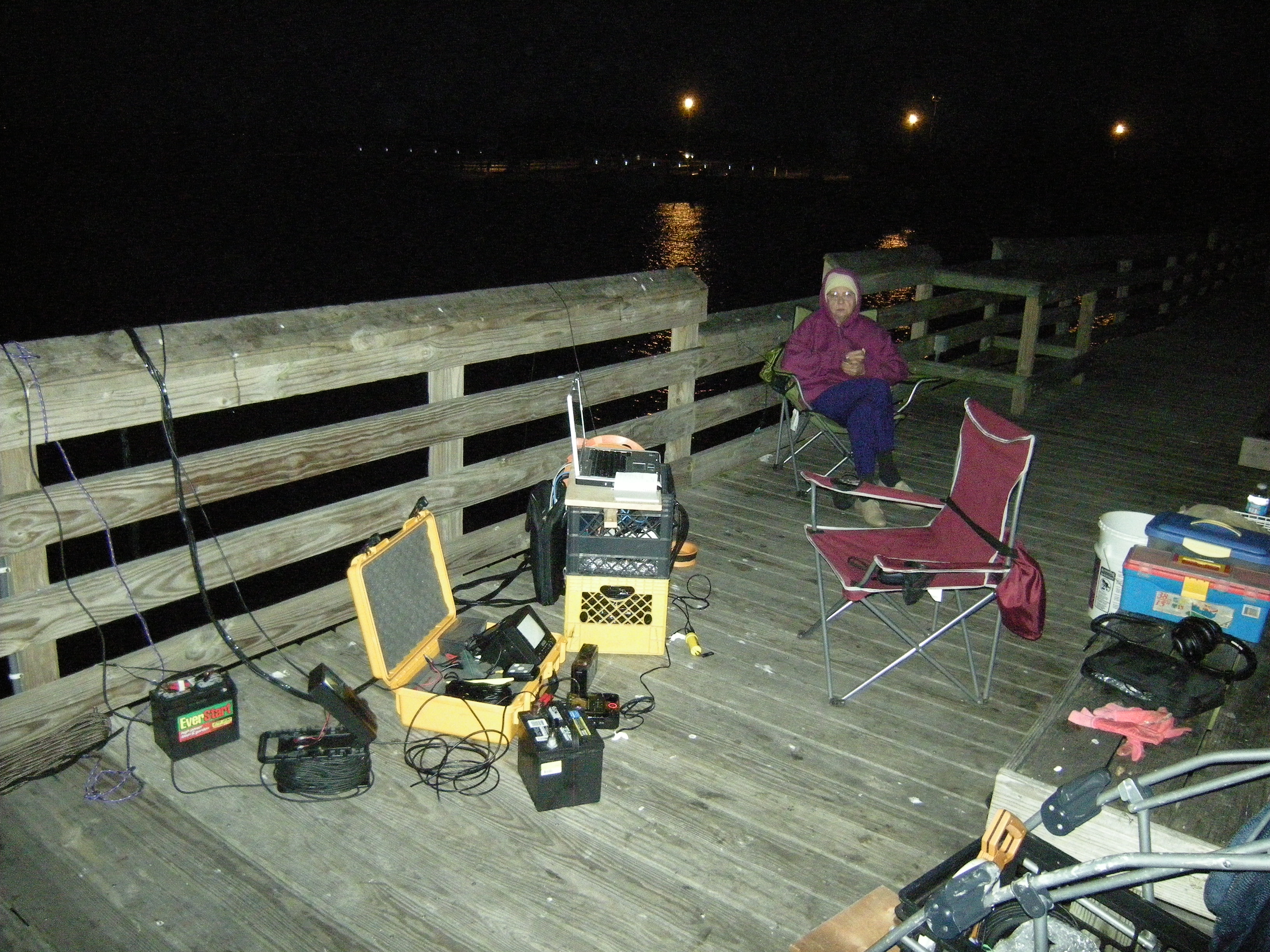 Photo of my Mom braving the cold to help me
(and catch some fish for dinner!) in November 2011
Photo of my Mom braving the cold to help me
(and catch some fish for dinner!) in November 2011
Sometimes when I was vacationing in Morehead City, my Mom, who loved to fish, would accompany me. Unfortunately, she passed away a few years ago and I was taken by
surprise when I heard her voice while reviewing these recordings in order to create this web page. The first time I noticed she was laughing at me while I struggled to
hold a lizardfish in the auditioning pool! Have you ever tried to hold a lizardfish? They are very strong and almost as bad as trying to hold an American eel.
Listen to my Mom tease me as I tried to audition a lizardfish.
Little did I know then that she would pass almost exactly a year later.
Usually when I'm sampling, I am inundated with questions from local fishermen and tourists, which can often be heard on the recordings. They are always fascinated,
and then some of them start bringing me fish to audition. Sometimes itís more than I can handle and I don't get to fish at all myself. But that's o.k. with me. In
that way I've gotten to audition some fish that I would not have had an opportunity to audition if I had to rely on my own fishing ability!
Below are photographs of examples of fishes I have auditioned for sound production while on vacation mainly in the late fall of the year. Not all the species produced sounds. Lack of sound production in my auditions does not mean the species is not soniferous, but just that those individuals were silent for a variety of reasons. For those that produced sounds, the photo is of the exact fish that produced the sound in the recording and spectrograms (unless otherwise noted). For each sonifierous individual you can listen to the sound it made and view a spectrogram of the sound in that clip. In some cases, I include an extra spectrogram that is zoomed into a closer look at individual sounds in the sound clip. Note, you may wish to use headphones and adjust the volume when listening to fish sounds.
|
So far all the specimens of this species I've examined have been silent. |
|
|
|
A 16 cm (6.3 in) SL male Silver perch, Bairdiella chrysoura auditioned at approximately 2300 h on 17 November 2013 at the Beaufort, NC Pier. |
|
|
|
So far all the specimens of this species I've examined have been silent. |
|
|
|
So far all the specimens of this species I've examined have been silent. |
||
|
A 24 cm (9.5 in) SL spotted seatrout, Cynoscion nebulosus, also know as speckled trout or spotted weakfish, auditioned at approximately 2340 h on 13 November 2014 at the Beaufort, NC Pier. |
||
|
A 23 cm (9 in) SL weakfish, Cynoscion regalis, also know as gray trout, auditioned at approximately 2137 h on 7 November 2014 at the Beaufort, NC Pier. |
||
|
So far all the specimens of this species I've examined have been silent. |
||
|
A 16 cm (6.3 in) SL spot, Leiostomus xanthurus, auditioned at approximately 0128 h on 26 August 2012 at the Beaufort, NC Pier. |
|
|
|
So far all the specimens of this species I've examined have been silent. |
||
|
So far all the specimens of this species I've examined have been silent. However, on one occasion in November 2014 I recorded a weak possible sound, although sounds are not known from the species except for short "toothy rasps". |
||
|
A 13.5 cm (5.3 in) SL Atlantic croaker, Micropogonias undulatus, auditioned at approximately 2200 h on 17 Novemeber 2013 at the Beaufort, NC Pier. |
||
|
A 13 cm (5 in) SL Oyster Toadfish, Opsanus tau, auditioned at approximately 1554 h on 11 November 2014 on Harbor Island, SC. |
||
|
This fellow did not take to kindly to being auditioned. It bit me while I was trying to audition it! It did not really hurt, but it sure startled me! |
|
|
|
A 13 cm (5 in) SL Pigfish, Orthopristis chrysoptera, auditioned at approximately 2213 h on 7 November 2014 at Beaufort Pier. |
||
|
A 19 cm (7.5 in) SL bluefish, Pomatomus saltatrix, auditioned at approximately 2200 h on 3 September 2019 at Beaufort Pier. So far all young-of-the-year bluefish I've auditioned on the east coast have been silent. However, I have sometimes felt a thumping that appears to arise from the muscles on the nape of the head. |
|
|
|
A 20 cm (8 in) SL Striped searobin, Prionotus evolans, auditioned at approximately 2213 h on 7 November 2014 at Beaufort Pier. Note the two dark lateral lines that help identify the species. |
Close-up of the head of a Striped Searobin swimming in the auditioning pool. |
Striped Searobin swimming in the auditioning pool. |
|
A 19 cm (7.5 in) SL Unidentified searobin, likely a color variant of Prionotus evolans, but possibly a hybrid with the Bighead searobin Prionotus tribulus, auditioned at approximately 2055 h on 7 November 2014 at Beaufort Pier. Listen to me trying to audition an uncooperative searobin |
||
|
A beautiful species of searobin but so far all the specimens of this species I've examined have been silent. However, they are likely vocal as I could feel their bodies strumming as I auditioned them, but no audible sounds were produced. |
|
|
|
Sound not used here as it was recorded in a bucket. Puffers threat response is to gulp water (or air) to inflate themselves up to make themselves bigger and either scare away a predator, or hopefully be too big for it to eat! Here is a puffer that has not inflated. |
||
|
A 16.5 cm (6.5 in) SL Striped searobin, Sphoeroides maculatus, auditioned at approximately 1415 h on 7 November 2014 at Beaufort Pier. The specimen has inflated with air. |
Another view of the same puffer. |
|
|
A 14 cm (5.5 in) SL Northern Puffer, Sphoeroides maculatus, recorded while deflating at approximately 1335 h on 7 November 2014 at Beaufort Pier. |
|
|
|
So far all the specimens of this species I've examined have been silent. |
|
Return to: | TOP |
Copyright © 2019 by Rodney Rountree. All rights reserved
Navigate toolbar: [ Fish Diets | My Photos | Estuarine Research | FADs | Soniferous Fish | My CV | My Youtube | Children's Stories | Fish Facts | My Writings | Home Page ]